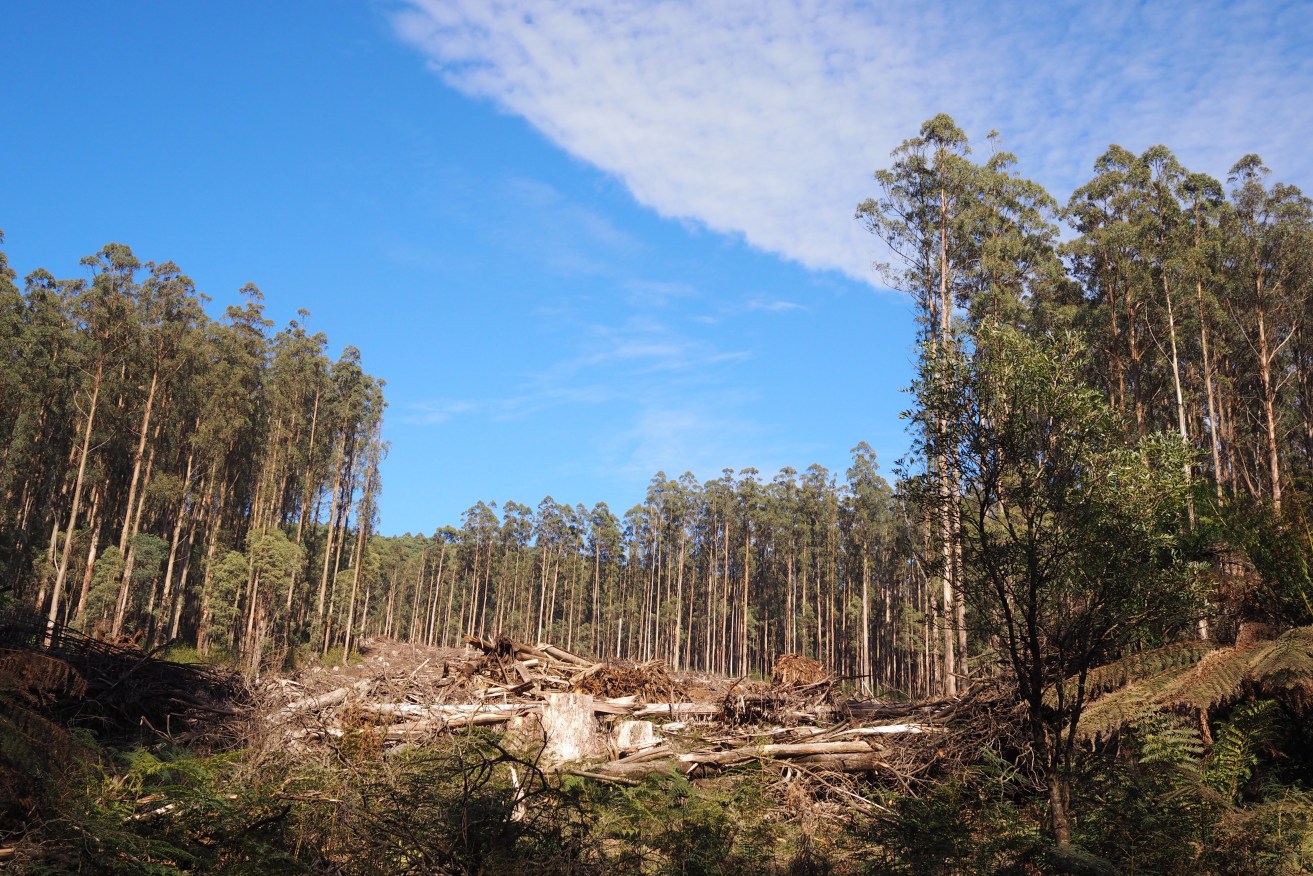Call to axe logging in national parks to cut bushfire risk
Allowing logging in national parks would increase the intensity of bushfires by boosting the amount of flammable fuel and creating additional “kindling”, experts have warned.

Photo: AAP/Australian National University
Millions of hectares have been scorched in raging bushfires across Australia since October, and scientists claim fires burned at a higher intensity in heavily-logged forests.
Australian National University Professor David Lindenmayer says while the main driver of fires is the climate, logging makes forests drier and leaves behind flammable debris on the ground.
“Forests that have been logged and regenerated are significantly more likely to burn at higher severity,” he told AAP.
“Very substantial areas of forest which were logged in East Gippsland and southeastern NSW have been burnt this summer.”
Lindenmayer said scientists and the government have known about this for a long time.
Researchers found logged forests burned at a “significantly” higher severity during the 2009 Black Saturday bushfires in Victoria.
“It’s not something we should be entertaining anymore,” he said.
“It’s not a profitable industry. It’s adding dramatically to the fire risk. This is crazy.”
Recent calls by the forestry industry to selectively log national parks in a bid to reduce the bushfire risk are “lacking science”, Lindenmayer argues.
He says the industry proposal would actually make areas more fire-prone.
“If Scott Morrison is serious about keeping the community safe then you wouldn’t be logging more forests, you’d be logging a lot less,” Lindenmayer said.
One of the areas heavily impacted by bushfires this summer has been the NSW South Coast.
The huge Border blaze has burnt more than 160,000 hectares south of Eden.
Forest ecologist Andrew Wong says much of that area is the “most heavily logged land” in Australia.
“Intense logging for woodchipping to feed the Eden chip mill started in the 1960s there and it’s as intensive as logging can get,” he told AAP.
“The map of the Border fire pretty much overlaps the same area that’s been logged.”
He argues older forests are harder to burn because the trees are wetter and further spread apart.
Logging replaces the old giant trees with younger ones that look like toothpicks, grow closer together and dry out the soil, Mr Wong added.
“You’ve got your kindling. Logging removes most of the water from the landscape and replaces it with small dry kindling.”
The forests grow back more fire-prone and remain that way until they become mature which can take 100 years or longer.
Environmental group the Colong Foundation for Wilderness called on the NSW government to close down the native forest logging industry given the stress fires have caused to wildlife.
“Wherever the forestry industry interferes with wet old-growth forests, they dramatically increase the fire danger,” spokesman Harry Burkitt said in a statement to AAP.
The Forestry Corporation of NSW says state forests have been grown and regrown for sustainable timber for over 100 years.
The current blazes have burned intensely across a range of land tenures, a spokeswoman said.
“Timber harvesting and regrowing takes place in around one per cent of the native NSW state forests each year or 0.1 per cent of the forested areas in NSW.”
The forestry corporation added it was a “formal firefighting authority” which plays a key role in firefighting and prevention.
-AAP
Want to comment?
Send us an email, making it clear which story you’re commenting on and including your full name (required for publication) and phone number (only for verification purposes). Please put “Reader views” in the subject.
We’ll publish the best comments in a regular “Reader Views” post. Your comments can be brief, or we can accept up to 350 words, or thereabouts.
InDaily has changed the way we receive comments. Go here for an explanation.




